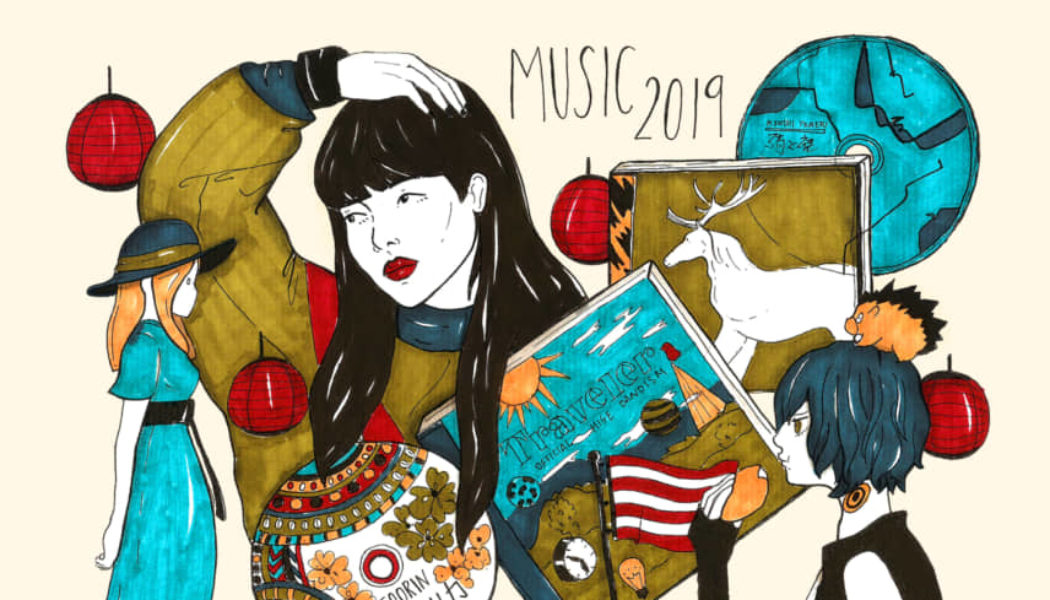Fifteen years since the release of the groundbreaking singing voice synthesizer software Hatsune Miku in 2007, Vocaloid has become an essential part of the current J-pop landscape. Numerous artists whose music careers got started by producing and sharing tracks made with Vocaloid software — “Vocalo” is now a J-pop sub-genre and its producers are collectively called “Vocalo-P” in Japanese — have broken into the mainstream, including hitmakers Yonezu Kenshi and YOASOBI, who have dominated the Japan charts in recent years.
Why have so many gifted artists emerged from the Vocaloid scene? What are some of the factors that led to Vocalo-P creators becoming solo singer-songwriters or forming groups with other artists to find success in the realm of mainstream J-pop?
The Japanese Vocaloid scene and the J-rock scene have been influencing each other since the end of the aughts. The first turning point that led to the current environment for Vocalo-P creators to segue into the J-pop mainstream was in 2009. supercell, the band led by the music producer who wrote one of the biggest early Vocaloid hits called “Melt” — made its major label debut this year. In August, the group released its first single called “Kimi no Shiranai Monogatari” (“The Story You Don’t Know”) featuring guest vocalist nagi (Yanagi Nagi), a so-called “utaite” singer who had been releasing cover videos of Vocaloid tracks online. This song became a hit as the ending theme of the anime series Bakemonogatari and is the first example of a commercially successful collaborative unit formed by a music producer who started out as a Vocalo-P and a non-virtual singer.
Also around this time, creators with musical roots in J-rock who grew up aspiring to form their own bands began sharing music online as Vocalo-Ps. These music producers gained popularity for their original styles, with Hachi and wowaka as leading examples. Hachi crossed over into the mainstream as a solo singer-songwriter in 2012 under his real name, Yonezu Kenshi, and made his major label debut with “Santamaria” in 2013. wowaka formed the band Hitorie in 2012, which debuted from a major label in 2014 and expanded its reach beyond the Internet music scene to fans of live rock music through nightclub tours and festival appearances.
The trend continued as numerous creators who became famous in the Vocaloid scene debuted in the mainstream as solo singer-songwriters, bands and groups, expanding their fields beyond cyberspace. These artists include n-buna — the composer of the group Yorushika — and Balloon aka singer-songwriter Suda Keina. Other bands that formed in the mid-2010s whose central members have Vocalo-P backgrounds include Penguin Research, Cider Girl and more.
Then in 2019, YOASOBI made its major label debut with “Yoru ni kakeru” (“Into The Night”), which went on to rule the year-end Billboard Japan Hot 100 list the following year. ayase, the composer of the breakout duo, was originally a vocalist in a rock band when he was 16 years old and later began creating music using Vocaloid software. YOASOBI was a hitherto completely unknown act that rose to prominence in the year when the COVID-19 pandemic transformed society as a whole, and the pair’s success greatly influenced the state of J-pop since.
Watch YOASOBI’s “Into the Night” music video.
A major characteristic of J-pop in the 2020s is that the barrier between mainstream music and the indies Vocalo-P scene is now gone and the two are on the same plane. When Yonezu Kenshi and Hitorie began their careers, a Vocalo-P who began working as an artist in the mainstream was seen as crossing over from the mostly amateur music community where they originated. But today, there are many artists, such as ayase of YOASOBI and syudou — the composer of Ado’s breakout hit “Usse-wa” — whose fields are in both the mainstream and the Vocalo-P scene.
A band that symbolizes this contemporariness is Kuhaku Gokko, which bills itself as “from Shimokitazawa, active mainly in the Internet scene.” Formed in 2019, the three-member band consists of vocalist Setsuko, composer Harihara Tsubasa, and koyori. Harihara and koyori are longtime Vocaloid music producers — the former under the name HarryP and the latter, DenporuP — and the band began when they met Setsuko, a “utaite” singer who had covered HarryP’s Vocaloid tracks, via social media. While the group has roots in the Vocaloid scene, it categorizes itself as a band “from Shimokitazawa” because the production studio the members belong to called Evergreen Leland Studio is located in front of Shimokitazawa Station in Tokyo.
Kuhaku Gokko kicked off its career in December 2019 with the release of “Natsu” on YouTube. The band maintained a mysterious presence at first by releasing their music through audio and video streaming, but began branching out into live music by performing in venues located in the neighborhood of “Shimokita,” where they are based. Though the district’s scale is smaller than Shibuya and Shinjuku, Shimokita is one of the centers of Tokyo’s music culture with its many nightclubs, recording studios, and record stores. Shimokita’s live music scene has produced a variety of punk, emo, alternative, and indie rock bands, and Kuhaku Gokko’s music falls under this sub-genre of J-pop.
[embedded content]
The songs they have released so far, such as “Unmeikaika” and “Strobe,” are mainly alternative rock songs with a fast-paced feel. The appeal of these songs lies in Setsuko’s vocals, which express delicate emotions through her versatile use of everything from sighs to screams. The band’s sound is aggressive, centered on bombarding, fiery guitar phrases.
[embedded content]
Meanwhile, Kuhaku Gokko’s first single called “Last Straw,” released Feb. 16, is the first ballad by the band. It’s an epic, emotional number incorporating piano and strings, written as the ending theme for Season 2 of the anime series Platinum End. Some highlights of the track, featuring a balanced mix of slow and rapid arrangement, is the moment of silence before the first chorus and the development from the guitar solo towards the latter half of the song.
[embedded content]
Many other bands, groups, and solo singer-songwriters with roots in Vocaloid music are also active in the current Japanese music scene, including Kujira, Kitani Tatsuya, NEE, Van de Shop, Nomelon Nolemon, Haruka Ryo and Kamiya Shiryu. It’s no longer unusual to find musicians who do both: produce music as an online Vocalo-P and perform live as a member of a band in the nightclub scene.
The future of this new pop culture from Japan is something to keep an eye on as it continues to develop in its own unique way.
This article by Shiba Tomonori first appeared on Billboard Japan. Names are in Japanese order, surname first.
[flexi-common-toolbar] [flexi-form class=”flexi_form_style” title=”Submit to Flexi” name=”my_form” ajax=”true”][flexi-form-tag type=”post_title” class=”fl-input” title=”Title” value=”” required=”true”][flexi-form-tag type=”category” title=”Select category”][flexi-form-tag type=”tag” title=”Insert tag”][flexi-form-tag type=”article” class=”fl-textarea” title=”Description” ][flexi-form-tag type=”file” title=”Select file” required=”true”][flexi-form-tag type=”submit” name=”submit” value=”Submit Now”] [/flexi-form]










Tagged: Billboard Japan, entertainment blog, Global, Japan, music, music blog, Music News